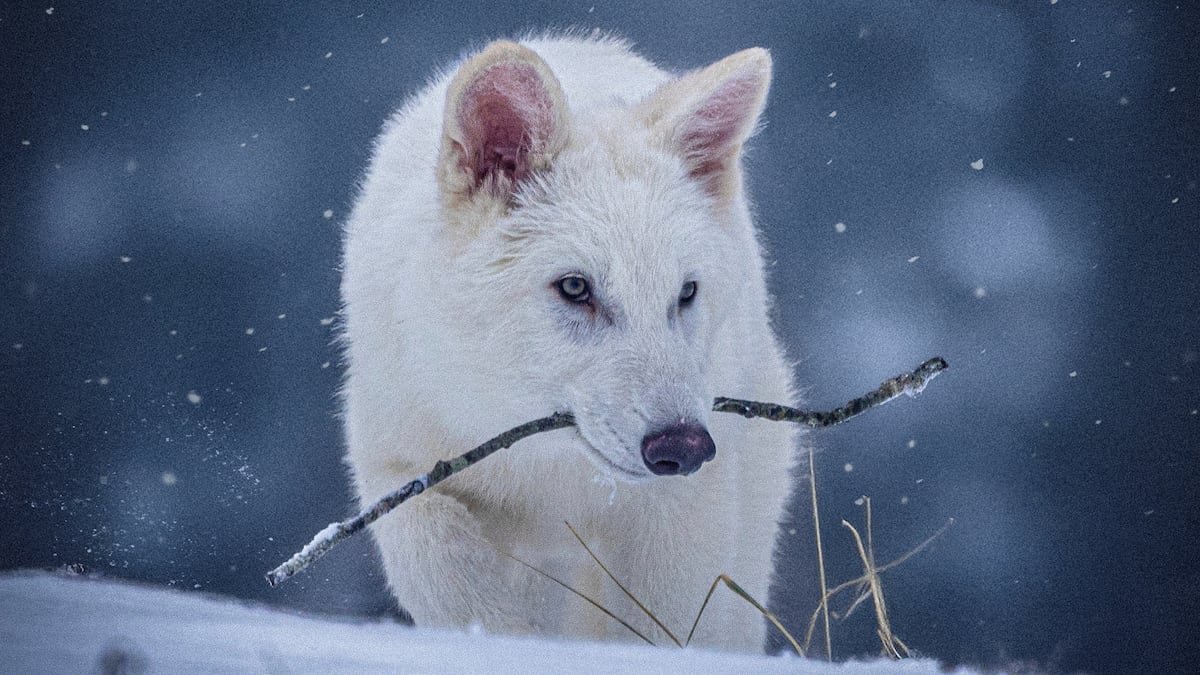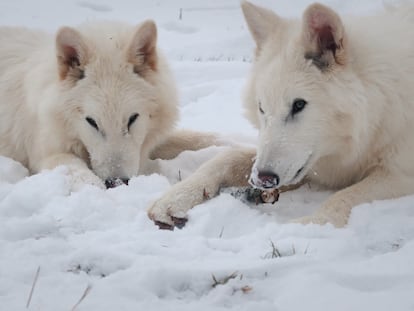The dire wolf isn’t exactly back, but it wouldn’t be the first ‘de-extinct’ species — and dodos and Tasmanian tigers could be next
Ethical debates regarding Colossal Biosciences’s achievements and over-marketing aside, the company behind woolly mice is expanding our views on what’s possible

If it looks like a duck, swims like a duck and quacks like a duck — it still might not be a duck, but rather, a genetically modified animal similar to one. On Monday, the world met Romulus and Remus, who were presented as “the first dire wolves to exist in 10,000 years.”
The powerful biotech company Colossal, which just a month ago presented their woolly mice with mammoth genetics, crowed in the header of a press statement that, “the first de-extinct animals have arrived.” But strictly speaking, the creatures aren’t dire wolves, nor do they represent the first species to be brought back.
And that is not to take away one iota of interest from the firm’s achievement, nor to suggest that it’s anything less than revolutionary. It’s likely that this same company will one day re-introduce us to dodos and Tasmanian tigers. The science behind its work is of the highest quality, carried out by elite researchers like George Church and Beth Shapiro — but it’s clear that the company’s value depends on its ability to continue delivering these media-friendly bombshells.
“What they have been able to do is risky, and they’ve done it very successfully. I tip my hat, because they’re resolved very complex problems,” says geneticist Lluis Montoliu of Spain’s National Research Council. As a bioethics expert, it’s his opinion that, “what Colossal does is somewhere between surprising and worrisome. What is the point of creating these animals, of having a zoo of impossible creatures?”
What has Colossal done?
At the moment, all our information comes from two reports published by The New Yorker and Time. That’s because the dire wolf achievement has yet to be published by any scientific journal, typically the litmus test for science done well. At least with the woolly mice, researchers had their study published, albeit without peer review.
According to Colossal’s account, 91% of the wolves’ genome was obtained by extracting ancient DNA from a 13,000-year-old tooth found in Ohio and a 72,000-year-old inner ear bone in Idaho. It turned out to be 99.5% similar to that of the common wolf, and scientists were able to identify 20 key differences in 14 genes that determine the characteristic appearance of the dire wolves, which went extinct 10,000 years ago.
They modified common wolf cells to edit those 14 genes and implanted them into the eggs of female dogs, who then gestated their new creations. Initially, of the first 45 embryos, only two reached full term (now, there is a third, who has been named Khaleesi). At six months, the wolves already measure three feet, 11 inches and weigh 176 pounds. They’re expected to grow to nearly five feet.

Are they really dire wolves?
They’ll be as big as a dire wolf, they will have its robust head and jawline, its white fur, its more developed musculature and its howls — but they’re not the same. They are merely normal wolves, genetically manipulated in key areas to look similar to the spectacular extinct carnivores.
“It’s not possible to bring back something exactly the way it was,” explains Shapiro, who is chief science officer at Colossal, in the New Yorker article. She clarifies they have achieved what they set out to do: “We’ve succeeded in creating the phenotype of a dire wolf.”
A phenotype is a set of visible characteristics in a living being, including its appearance, size, color and behavior, which comes from its genes and environment. This is what Colossal aspires to: no more or less than the creation of animals who look similar to mammoths, Tasmanian tigers and dodos. This is also why the company doesn’t talk of creating mammoths, but rather, mammoth-like creatures: woolly elephants with gigantic tusks. “The primary goal is not to make perfect photocopies, but to make diverse and selective hybrids with modern, ancient and synthetic DNA,” Church told EL PAÍS.
Why dire wolves?
The species has everything Colossal needs to advance its research while at the same time winning over the public. Ben Lamm, the company’s CEO, tweeted a photo with the new canines as if they were the dire wolves from Game of Thrones. It is as strategic as it is media-savvy, guaranteeing spectacular photos and videos, and neatly fitting into the narrative of charismatic megafauna like the saber-toothed tiger.
The dire wolf’s genome is more accessible than that of more ancient species. It also has a close living relative, or a similar species, that can serve as a canvas for the genetic brushstrokes needed to recreate its appearance. And, if the company’s ambitions hold true, it might one day even inhabit an ecosystem resembling the one it once roamed.
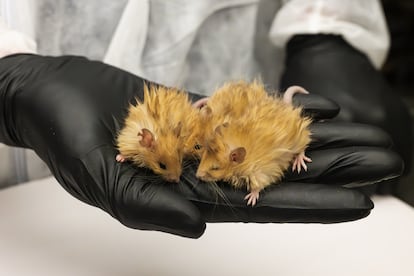
Are they the first species to become de-extinct?
No. Primarily, because they aren’t dire wolves in a strict sense. Not to mention, because they wouldn’t even be the first case of such a resurrection. Spanish researchers were global pioneers in the field of de-extinction. On July 30, 2003, they brought back a de-extinct species for the first time, the Pyrenean ibex. Scientists from government agencies managed to clone Celia, the last mountain goat of her kind, which had gone completely extinct when she died in January 2000 after decades of being overhunted. A few months before her death, Celia had been captured in order to take her DNA samples. Using the same technology that had allowed the cloning of the sheep Dolly a few years earlier, scientists cloned her. The very complex procedure did not go entirely according to plan: a new Celia was born, but a malfunction in her lungs caused her to suffocate after just 10 minutes.
What creatures will be next?
Shapiro, who is an expert in recovering ancient DNA from extinct species, is known for having been the first to sequence the dodo’s genome. That bird’s return is now one of the company’s primary goals. The dodo would be brought back with the assistance of the Nicobar pigeon, or perhaps the goose. Colossal’s project to resurrect the tylacine or Tasmanian tiger, Australia’s legendary marsupial, is also underway. The company employs Andrew Pask, a professor at the University of Melbourne who has been pursuing the goal for years. The thylacine will have the dunnart — a mouse-like marsupial — as a genetic canvas. Also in the pipeline are the passenger pigeon, the ground sloth and the saber-toothed tiger.
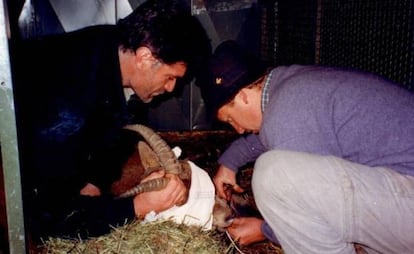
And of course, there’s the woolly mammoth, Church’s Holy Grail. It was in its pursuit that the woolly mice were created, in order to demonstrate that it was possible to put mammoth hair on another species. The plan is for a mammoth to be born in 2028, a goal that other specialists see as practically impossible. Although Shapiro was a skeptic for many years, she’s now become part of the company and a defender of “functional de-extinction” when it has real ecological applications. As she explained years ago in a conversation with EL PAÍS, “I don’t understand why not being 100% identical to an extinct species would prevent the introduction of a species into a habitat. If Colossal creates an elephant that is capable of thriving in Siberia, that should be enough, if the local people want it to happen.”
Why is Colossal doing this?
It’s a company valued at more than $10 billion, with high-risk investors and personalities in its orbit like Thomas Tull, producer of the film Jurassic Park, Paris Hilton, Peter Jackson and Chris Hemsworth. “They’re on the frontlines of massive genetic modification, but are creating these creatures as if it were recreational technology, to keep investors interested,” says Montoliu.
The company was founded by Lamm, who is given to sci-fi-like declarations, and the prestigious Harvard geneticist Church. “Everything Church touches turns to gold,” says Montoliu, who seems disconcerted by the firm’s combination of first-class science and the media circus often associated with its projects.
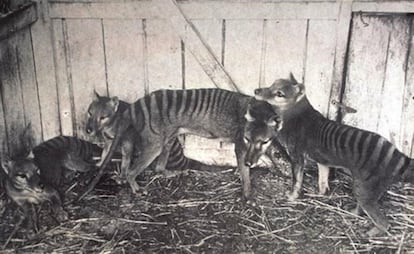
It is true that Colossal manages to generate a phenomenal PR impact every so often with its scientific achievements, such as with the woolly mice and dire wolves. But underneath that noise are biotech developments that can provide a lot of return for the company. For example, the process that led to the wolves was carried out using endothelial progenitor cells (EPC) extracted from the blood of lives wolves, avoiding invasive techniques.
They are also developing artificial wombs to gestate the animals, cell biobanks for conservation, a multi-species genetic editing platform. There are countless tools applicable to human medicine and biology that can be patented and commercialized for the development of treatments, to improve assisted reproduction and to provide environmental solutions. Colossal has already generated several spin-off companies, like one that is dedicated to microbial degradation of plastics and another focused on computational biology with biomedical applications.
And it’s not just bringing back extinct animals, but also using their genetic developments to improve the viability of species that are at risk of extinction, such as endangered birds (thanks to research on the dodo) and the white rhinoceros. In addition, Colossal has cloned four red wolves, a functionally extinct species, for which it is designing new genetic diversity. With all these developments, valuable objectives are achieved.
But the doubts raised by Montoliu are still valid. “Why do we want to de-extinguish, to prove that you’re capable of doing so?,” he queries. “Why not resurrect Neanderthals? It would be ethically unacceptable, but not for everyone.”
Sign up for our weekly newsletter to get more English-language news coverage from EL PAÍS USA Edition
Tu suscripción se está usando en otro dispositivo
¿Quieres añadir otro usuario a tu suscripción?
Si continúas leyendo en este dispositivo, no se podrá leer en el otro.
FlechaTu suscripción se está usando en otro dispositivo y solo puedes acceder a EL PAÍS desde un dispositivo a la vez.
Si quieres compartir tu cuenta, cambia tu suscripción a la modalidad Premium, así podrás añadir otro usuario. Cada uno accederá con su propia cuenta de email, lo que os permitirá personalizar vuestra experiencia en EL PAÍS.
¿Tienes una suscripción de empresa? Accede aquí para contratar más cuentas.
En el caso de no saber quién está usando tu cuenta, te recomendamos cambiar tu contraseña aquí.
Si decides continuar compartiendo tu cuenta, este mensaje se mostrará en tu dispositivo y en el de la otra persona que está usando tu cuenta de forma indefinida, afectando a tu experiencia de lectura. Puedes consultar aquí los términos y condiciones de la suscripción digital.
